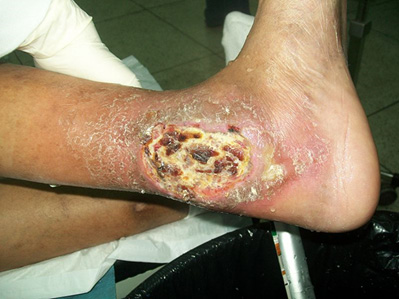Joseph R. Anticaglia MD
Medical Advisory Board
Type 2 Diabetes is a chronic condition that affects 37 million Americans. Nine out of ten times diabetes it’s caused by T2D. Approximately eight per cent of the time it is due to type 1 diabetes.
If you get diabetes, you have too much sugar (glucose) in the blood. The hormone insulin
works to keep your blood glucose levels within a normal range, For insulin to do its job, the body’s cells need to be sensitive to insulin. The cells need to respond to insulin. Elevated blood glucose levels occur when there is not enough or any insulin circulating in the blood and/or cells don’t respond to insulin.
Cells need the energy provided by sugars in our diet to function normally. The body breaks down sugars into glucose. Normally, the hormone insulin binds to receptors located on the outside of cells. Insulin-binding causes the cells to release glucose transport proteins. A series of reaction occurs. The cells open their doors to glucose, and the transport proteins, called, GLUT4. The proteins escort the glucose into the cells of the body to be used as fuel.
People with Type 2 diabetes experience insulin resistance, meaning the body doesn’t allow glucose to enter the cells The cells shut their doors to insulin. The pancreas, with its beta cells, try to compensate by producing more insulin. Eventually, the pancreas produces less insulin and too much glucose accumulates in the blood — hyperglycemia.
Hyperglycemia, elevated blood glucose, in time, can causes a narrowing of the arteries, hypertension, heart disease, kidney problems, peripheral neuropathy and other complications. Lifestyle changes, oral medications, and insulin injections are used by T2D patients to bring down blood glucose levels to normal levels.

‘What Causes T2D?’
Type 2 diabetes occurs when your cells resist insulin or the pancreas doesn’t make enough insulin. Being overweight, inactive, unhealthy eating habits and a family history of T2D contribute to this disease.
Diagnosis
Laboratory blood tests are used to diagnose diabetes, and they include:
- Fasting Glucose test — usually done in the morning. Nothing to eat or drink after fasting for 8 hours.
- Random Glucose Test — done any time No need to fast.
- A1C test — done any time No need to fast. Measures the average blood glucose level over the past two to three months.
Signs and Symptoms: ‘P & S’
People withT2D have hyperglycemia and glycosuria, glucose in the urine. They also complain of being very tired. Other symptoms include:
- Polyuria -increase frequency of urination
- Polydipsia — abnormally great thirst
- Polyphagia — excessive hunger
- Polyneuropathy — numbness and tingling in the hands and feet
Sugar:
- Slow wound healing
- blUrry vision
- Glycosuria — sugar in the urine
- Acetone breath —resembles scent of nail polish removal
- Repeated yeast infections — vaginitis
Complications
People with T2D can have symptoms for years before they’re diagnosed with this condition. In many instances, they don’t recognize the importance of their symptoms. Years of untreated diabetes can lead to constriction of arterial blood vessels. Vasoconstriction and hardening of the arteries can damage your kidneys, heart, peripheral nerves, eyesight and cause lower limbs problems that might require amputations.
Risk Factors
People are more likely to develop T2D who don’t exercise, are older than forty-five, overweight or obese have hypertension and have a family history of diabetes. In addition, prediabetes, gestational diabetes (see below), inactivity and ethnicity place you at a greater risk to develop T2D.
Treatment
The goals of treatment are to maintain your blood glucose levels within a normal range to lessen the risk of complications. They include:
Lifestyle
- Consultation with your family physician, and/or endocrinologist
- Healthy diet
- Healthy exercise
- Healthy weight
- Working with a nutritionist — physical therapist
Medications
Along with lifestyle changes for the better, patients may require medications that include:
- Oral medications
- Insulin
- Test your blood glucose at least daily
- Consult with your physician concerning the best program for you
Type 2 diabetes is a chronic, metabolic condition that is usually diagnosis after the age of forty. This disease is primarily due to the body’s insensitivity to insulin. Eventually, they may require insulin on a daily basis. As a result, there’s too much glucose in the bloodstream. These factors can lead to serious complications. T2D is manageable and reversible with a healthy lifestyle and medications.
References
- National Institute of Diabetes and Digestive and Kidney Diseases; Type 1 Diabetes; July 18,2017
- Joseph R. Anticaglia, MD’ Type 1 Diabetes Four Key Players; Doctor’s Column, HC Smart, 2022
- CDC: National Diabetes Statistical Report; January 18, 2022
- Wikimedia commons; File: Pie diabetic. jpg Category: Diabetic foot ulcer; Bobjgalindo Chronic left ankle diabetic ulcer 3 June 2010
- Mary Caffrey; Amputations May Be Rising in the United States American Journal of Managed Care December 13, 2018
Addendum
Gestational diabetes mellitus (GDM) is a condition that happens during pregnancy in which a hormone made by the placenta prevents the body from using insulin effectively. GGM causes blood glucose levels to build up in the blood instead of being absorbed by the cells.
Soon after delivery, the mother’s elevated blood glucose usually returns to normal. Women with GDM are at a higher risk to develop type 2 diabetes. Their blood glucose levels need to be tested more frequently.
Prediabetes
With prediabetes, blood sugar levels are higher than normal, but not high enough yet to be diagnosed as type 2 diabetes. Prediabetes raises your risk for type 2 diabetes, heart disease, and stroke.
This article is intended solely as a learning experience. Please consult your physician for diagnostic and treatment options.

